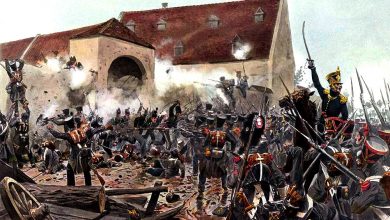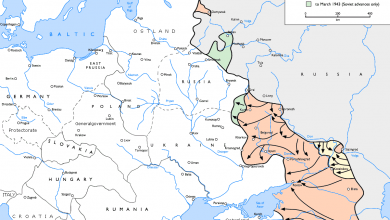When Pontus Challenged Roman Rule: The Rise Of King Mithridates VI
Mithridates led Pontus from minnow status to a threat to Roman hegemony

In the year 122 BCE, Rome’s meteoric ascent to hegemony in the Mediterranean seemed unstoppable. The Republic was busily strengthening its influence in Greece and Anatolia through the establishment of several client states and strategic alliances. In that same year, however, another fateful event came to pass, with Mithridates VI ascending to the throne of Pontus, a diminutive kingdom in north-eastern Anatolia.
Over the course of his reign, Mithridates would become the single greatest challenger to Roman expansion towards the Black Sea. Pontus and Rome would fight three bloody conflicts, known as the Mithridatic Wars, in the space of twenty-five years. The first such conflict would end with the Treaty of Dardanos in 85 BCE, cementing Roman control of Greece and Anatolia.
The Rise of Mithridates VI
Mithridates VI Eupator ascended the throne of Pontus at the age of thirteen, under the regency of his mother, and following the assassination of his father. His ruthless streak was revealed mere years later, with the killing of his brother Mithridates Chrestus in order to secure his own sole rulership over Pontus. He had his mother imprisoned, where she allegedly died of natural causes, and married his sixteen year old sister to solidify his control on the kingdom.

Mithradates’ first major success was the conquest of Colchis, a polity located in modern-day Georgia, which was rapidly followed by the annexation of Crimea and the Bosporan kingdom some time around 115 or 114 BCE. This was done under the pretext of protecting the Greek cities of the region from the Scythians, nomadic peoples who were being pushed towards them by the advancing Sarmatians.
This threat was apparently severe enough that the cities and kingdoms of the area willingly surrendered their independence to Mithridates. The latter embarked on a vigorous campaign that allowed him to defeat the Scythians on multiple occasions, and in so doing dominating most of Crimea. Due to the way in which Mithridates had cleverly used a combination of force and diplomacy to gain control of his new territories, his armies were now bolstered by his new subjects and allies, including the Scythians themselves, and some Sarmatian princes.
The Road To War
Some two decades prior to these events, Rome had established a definitive foothold in the region, by gaining Pergamum through peaceful means. With his dying will, Pergamum’s last monarch provided for Rome to inherit his kingdom, rather than see it descend into a succession crisis, which also threatened to entice Pergamum’s greedy neighbours. Additionally, the Roman domination of Greece, and strong alliances with Greek states like Rhodes, provided Rome with a strong position to act from.
However, the Jurgurthine and Cimbri wars severely distracted the Romans, just as Mithridates turned his attention to the west. The Pontic king took this opportunity to occupy Pathlagonia, in concert with the kingdom of Bithynia. The occupation was short-lived: with Roman fortunes on the rise, the Senate ordered Mithridates to leave the territory, which he did – though Bithynia at the time ignored this demand. His next attempt at expansion was to conquer Cappadocia, a feat achieved largely through the assassinations of Ariarathes VI and VII. This time, the Romans responded quickly, forcing Mithridates to withdraw, and expelling Bithynian forces from Pathlagonia.

These attempts at expansion were beginning to seriously concern the Romans. Marius, in his diplomatic role in the region, had insisted that Mithridates should “be stronger than the Romans or obey their commands in silence”. Rome fully expected Mithridates to challenge them at some point, in order to make good his attempts to expand into much of Asia Minor. Mithridates, however, moved quicker than expected, hammering out an alliance with the Armenian king Tigranes I. Armenia was a significant regional power, and in combination with Pontus, it could present a realistic threat to Roman hegemony in the region.
Challenging Rome
Despite the stiffening Roman resistance, Mithridates remained on the lookout for opportunities to exploit. One such opportunity came when the Italian peninsula descended into the Social War, a military conflict that pitted Rome against its long-standing allied city-states and tribes in Italy. While Rome was distracted by the fighting, Mithridates rapidly seized control of much of Asia Minor, quickly retaking as far as Cappadocia to the south and using a pretender to de-facto seize control of Bithynia as well. The Romans dispatched Manius Aquillius to place the original kings of these countries back on their thrones, which Mithridates did not immediately oppose. Only when Aquillius coerced Nicomedes of Bithynia to attack Pontus did the war start in earnest.
At this point, the Pontic ambassadors had successfully engineered events to make Rome look like the instigator of aggression against Pontus, therefore allowing Mithridates to present his war as a defensive one. Once conflict erupted, his forces rapidly overran most of Asia Minor and defeated Aquillius in battle. After he had secured these territories and appointed satraps to govern them, Mithridates issued an order to massacre all Romans and Italians in Asia Minor, including their families and freedmen.
This massacre, known as the Asiatic Vespers, involved the slaughter of between 80,000 and 150,000 people, with Rhodes being the only real safe haven available for the targets of the butchery. This city remained a staunch ally of the Romans even while the other Greek states began to rebel in favour of Mithridates.

Rome responded in earnest to these upheavals. Sulla was dispatched to command a military expedition which quickly pacified the Greek states which had gone over to Mithridates. The operation was a complete success for Rome, with Sulla besieging Athens and forcing it to surrender in 86BCE. After Athenian dignitaries managed to insult Sulla while trying to surrender, the latter used sappers to bring down a huge section of the walls defending the city. With the way into the city open, Sulla’s army sacked Athens with such brutality that senators in the commander’s retinue had to beg him to not completely raze the city.
After the sacking of Athens, Sulla proceeded to win a crushing victory against a Pontic army between two and four times the size of his own, under Archelaos, at Chaeronea. He then proceeded to win another decisive victory against the odds at Orchomenus, where his army was similarly outnumbered. Sulla achieved this feat by doggedly entrenching his positions against repeated Pontic assaults, bleeding the attackers dry. At the same time, Roman forces under Flaccus and then Fimbria managed to retake Pergamum in Asia Minor.
The Treaty Of Dardanos
Despite these drastic victories, Sulla could not afford to wait out the enemy and endure a long war. Trouble at home required his return, and the general recognised the need to speedily come to terms with Mithridates. In light of the atrocities committed by Mithridates, peace negotiations with Pontus were perceived as a betrayal by many, including Sulla’s own soldiers. This was made even worse by the provisions of the treaty, which merely forced Mithridates to abandon the territory which he had gained during the war, and to pay reparations equal to the financial cost of the war.
The Greek states who had sided with Pontus were not shown the same leniency: Rome slapped them with collective war reparations around ten times higher than the cost of the conflict, and imposed harsh billeting terms which, according to Plutarch, ruined many wealthy families. The peace also allowed Rome to consolidate its power in Greece, fully subjugating the cities there to Roman rule. Additionally, Mithridates was declared a friend and ally of Rome once his personal reparations had been paid. However, the treaty was never ratified by the Senate, and as such its legal force depended exclusively on the personal power of Sulla.
The war had a curious cultural impact, as detailed by Plutarch: during the sack of Athens, Sulla acquired the library of Apellicon the Teian, which contained many works by Aristotle and Theophrastus. These books were not publicly available at the time, but this changed after Sulla’s seizure. Copies were made and shared, primarily with Rhodes, allowing the texts to become more widely known and safer from being completely lost.
The First Mithridatic War was ultimately inconclusive, with two more wars being required before Rome could extinguish the threat posed by Mithradates and his ally Tigranes I. At that point, Roman dominance in Greece and the west and south of Asia Minor finally became unchallenged.





